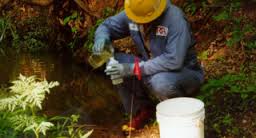Contaminated land Consultants are a branch of environmental consultants that manage compliance and audit issues where audits are needed if a real estate is being rezoned to a much more “sensitive” land usage, for example, from commercial to housing, or if an application has been put in to take off land from the Contaminated Sites Register and their services are quite often utilized by property developers when purchasing (or selling) land appropriate for business or residential development.
The first service a contaminated land consultant is going to give is to identify the likelihood of site contamination which is described as a Preliminary Site Investigation (PSI), or a Phase 1 Environmental Site Assessment report. The PSI must be sufficient to determine potential types/sources of contamination, areas of possible contamination, human and ecological receptors and possibly contaminated media (dirt, groundwater, etc).
A comprehensive Preliminary Site Investigation (PSI) will involve the following:
- Identification and description of the site,
- The site record (zoning, occupants, historical uses, aerial shots, property ownership, activities, interviews, etc);
- The environmental setting (geology, hydrogeology, topography, etc);
- A site reconnaissance visit to visually examine the site (and surrounds) for contamination;
- A preliminary theoretical site model; and (optionally) minimal contaminant sampling and evaluation at locations of possible environmental concern.
A PSI may conclude that there is a substantial potential for contamination (in which case further studies must be conducted). On the other hand, if an extensive preliminary examination shows a record of non-contaminating activities and there is no other proof or suspicion of contamination, more examination is not needed. However, if a Preliminary Site Investigation (PSI) recognizes a risk of contamination and the available info is insufficient to enable site management solutions to be developed, a Detailed Site Investigation, or DSI, might need to be conducted.
The Detailed Site Investigation (DSI) is the site sampling, or Phase 2 investigation stage. It sets out to mark the vertical and lateral extent of site contamination – generally with the site’s suggested land use in mind; or to advise after appropriate site remediation or management methods. Soil is always tested and groundwater and/or surface water is checked where the past use of the site signifies there is a risk of contamination; the soil is contaminated with compounds that can contaminate groundwater; or, if a surrounding site is known to be, or is possibly contaminated, and there is a threat of the contamination migrating to your site.
Where a properly planned and implemented DSI demonstrates that the site is not contaminated, then no additional works are required. If it demonstrates that the site is contaminated, even more investigation to inform decontamination requirements or to clarify potential human health hazards may be required.
Environmental auditing of a site can be a lengthy operation comprising soil and groundwater assessment, human health risk assessment, determination of “clean up to the extent practical” of contaminated groundwater, and off-site testing. A contaminated land audit might recognize environmental contamination factors that call for rectification or management.
As noted, comprehensive and total clean up of contaminated land is not always required. A contaminated land audit could be finished on a site that contains some ‘residual contamination’, and the auditor has provided a ‘Statement of Environmental Audit’. Development on this land can then continue, as long as the contamination is in keeping with appropriate land usage.
The Statement of Environmental Audit may contain particular requirements, especially if the site has been found to be a source site of contamination.
Sites having a completed Statement of Environmental Audit could require:
- Ongoing Groundwater Quality Management Plan;
- Soil Contamination Management Plan; or
- Additional soil/health-risk assessment requirements if disturbed.
If you are a property owner or land developer, the most important point to comprehend concerning contaminated land is that land owners can be held responsible for the remediation of contamination on their land.
Because of this, it’s necessary to explore a property’s contamination status prior to buying, to stay clear of acquiring costly environmental responsibilities along with the land.